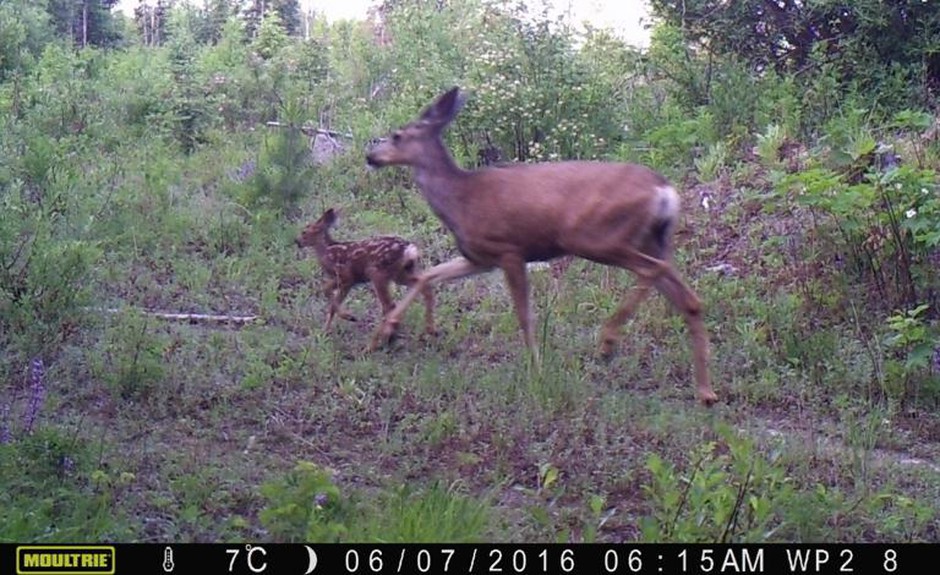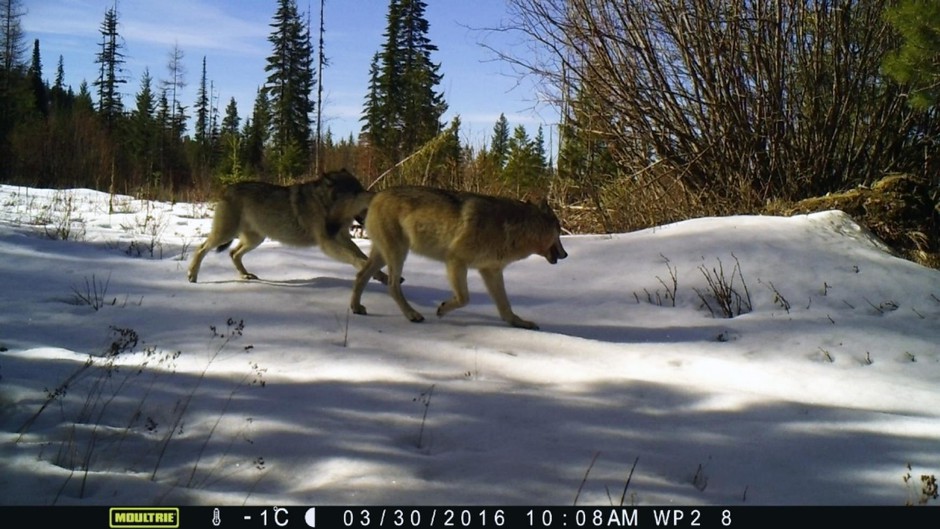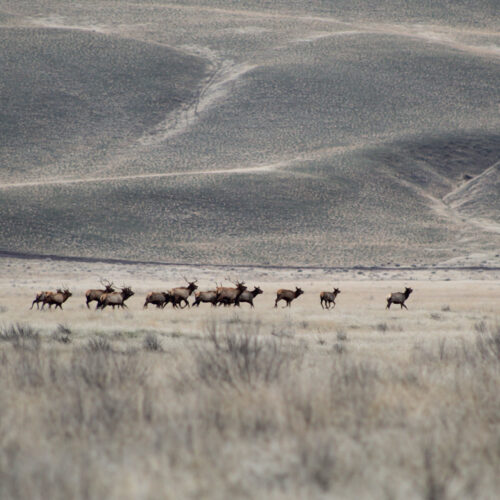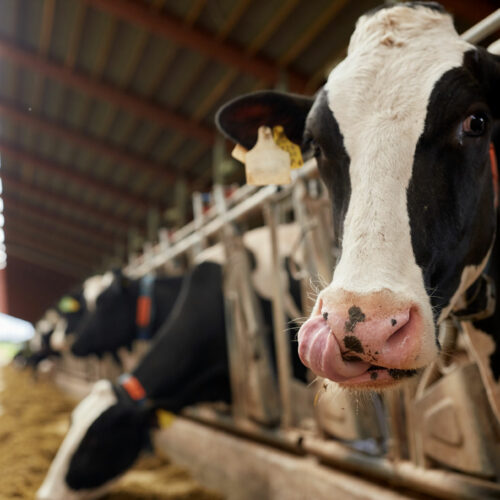
The Way Deer Escape Wolves Could Change How Hunters Hunt
Read On
As wolves return to the Northwest, deer have taken notice. Researchers found deer in Washington change how they react when wolves are near – and that could eventually change how hunters hunt.
Studies have found prey all react differently when a predators returns to the landscape. Deer are an important food source for the region’s growing wolf population. Wolves chase deer for miles when they need to eat.
That got researchers at the University of Washington wondering what the recolonization of wolves means for two species of deer in the state: white-tailed and mule deer.
The study was published in the journal Oecologia.
To the untrained eye, the two types of deer can look fairly similar. But the deer have small differences in the way they’re built that lead to big changes in the way they run away, said Aaron Wirsing, an associate professor in the University of Washington’s School of Environmental and Forest Sciences.
“If you’ve ever spooked the two deer, you can see that play out,” Wirsing said. “White-tailed deer are graceful runners. They maintain a very high speed, but over flat ground. By contrast, mule deer are more robustly built, and they have a hitch in their gallop.”
That makes the mule deer the slower of the two. So they’ve developed a quick jump as all four legs touch the ground, what’s known as stotting.

Wolves on a trail camera near Republic, Wash., in Ferry County. Courtesy of University of Washington
“They look like they’re bouncing on a pogo stick,” Wirsing said. “When you put them on uneven ground that bounding, or stotting, tactic is actually a very effective technique because it allows them to negotiate obstacles.”
The researchers found, when wolves are present, mule deer will move to higher elevations and steeper slopes to avoid the predators.
“If you’re in an uneven, rocky terrain, that cuts the angles of attack,” said Justin Dellinger, who completed the work as a University of Washington doctoral student and now works at the California Department of Fish and Wildlife.
Sometimes the deer moved miles away into higher elevation. It’s a good way to avoid wolves but, the researchers say, it could push them into mountain lion territory.
White-tailed deer are more comfortable running from wolves and sometimes moved to even flatter ground, where they could better see wolves coming from all directions.
All of this could, over time, have an effect on the plants deer graze on. When mule deer move to higher ground, the plants they had previously been eating could grow better. The plants they move toward may be eaten more, Wirsing said. White-tailed deer could concentrate their grazing in the flat areas.
Deer movements could also mean hunters have to change their tactics to bring home some venison.
Anecdotally, hunters told the researchers they’d already seen more mule deer on higher ridges, farther from roads.
“Maybe those old hunting spots aren’t going to be as good anymore,” Dellinger said. “We hear a lot that there’s no more mule deer in one area where they used to always be, but it might not necessarily be that the wolves wiped them out. It could just be that they’ve responded to the presence of wolves and have shifted where they are on the landscape.”
For white-tailed deer, researchers found they might move closer to roads. That would make hunting opportunities for white-tailed deer more abundant. It could also increase the risk of collisions with motor vehicles.
Over the three-year study, the researchers said they didn’t see wolves kill that many deer, only what they needed to survive. But while the wolves didn’t wipe out entire herds, the deer did react much more skittishly when the predators were around.
Dellinger said that could show some truth to ranchers’ claims that cattle are losing weight or are stressed simply because wolves are nearby.
“In our study, wolves didn’t account for a high mortality of either of our deer species, but they did influence behavior quite a bit. So maybe there is something to be said for the claims by the ranchers in that regard, and thus, maybe something to be said for compensation of indirect losses.”
Next, Wirsing said he is working on an ecosystem-wide study that will look at how multiple prey species react on a landscape with multiple predators.
“The broader implications are developing an understanding of the ecological roles of recolonizing large predators, like wolves, in human-modified landscapes. That, to me, is the new front of conservation, if these species are to have a chance in the future,” Wirsing said.
Copyright 2019 Northwest Public Broadcasting
Related Stories:

Fatal deer disease found in Washington for the first time
Mule deer in tall grasses and forbs, Iwetemlaykin Heritage Site, Wallowa Valley, Oregon. (Credit: Leon Werdinger / Alamy Stock Photo) watch Listen (Runtime 0:59) Read A fatal disease for deer

High steaks plate: Chronic wasting disease transmissibility to humans
Mule deer in tall grasses and forbs, Iwetemlaykin Heritage Site, Wallowa Valley, Oregon. Listen (Runtime 4:46) Read Chris Rau — a home chef, hunter, and student in the College of

A return after seven decades: Inside the Yakama Nation’s elk hunt on the Hanford Reach
A group of elk runs from Yakama Nation hunters on the Hanford Reach National Monument in December 2023. (Credit: Star Diavolikis / Yakama Nation) Listen (Runtime 3:50) Read A video















